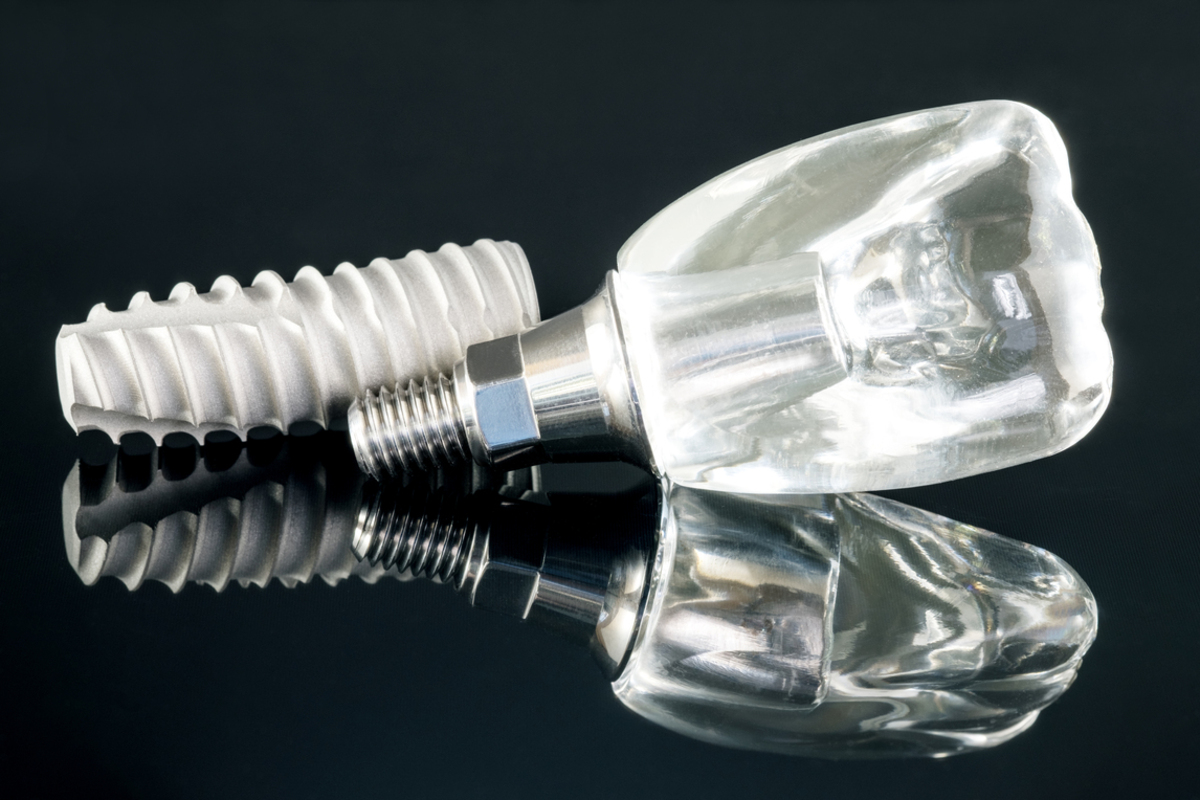It is considered natural to lose some amount of bone around the teeth with age. One of the major causes of loss of bone is periodontal disease. As the level of bone around the teeth decreases, it gradually leads to mobility, and eventually loss of teeth. Can people with periodontal (or gum) disease get dental implants?

What is periodontal disease?
Periodontal disease is the medical term for gum disease. Periodontal disease is an infection of the structures around the teeth — structures that are needed to hold the teeth in places.
When periodontal disease is left untreated for a long time, it leads to the loss of jaw bone. As the support for the teeth reduces, they start becoming loose and mobile and eventually need to be removed.
Other risk factors that increase the risk of getting periodontal diseases include smoking, diabetes, certain medications, and AIDS.
What are the problems with placing implants in patients with gum disease?
Unlike conventional bridges that rely on existing teeth for support to replace missing teeth, implants take their support entirely from the jawbone itself.
When a patient has been suffering from periodontal disease for a long time, there can be a considerable amount of bone resorption. There simply isn’t enough bone for the implant to adhere to. This either makes implant surgery impossible or causes eventual failure of the treatment.
Can implants be placed in patients who suffer from periodontal disease?
With a better understanding about different grafting techniques and newer techniques of implant surgeries, most patients suffering from periodontal diseases can be treated with dental implants. However, such patients may require extra procedures and extra care compared to routine implant patients.
Treating the gum disease before implant surgery: A must
All mobile teeth need to be removed, along with the teeth which have a poor prognosis, even if they aren’t mobile at the moment. The dentist cleans the remaining teeth thoroughly, using a vibrating tip to remove any plaque or tartar.
Most importantly, the cause for the disease is identified and treated to prevent further loss of bone and avoid the same issues cropping up later after the implant surgery.
What do you need to know about bone grafting?
After treating periodontal disease and letting the gums heal, your surgeon will advise you to get a 3-dimensional bone scan known as CBCT. A CBCT helps in visualizing the exact amount of bone present at the planned site for implants. It can also give an idea about the quality of bone present.
If the bone is found to be insufficient to support an implant, your surgeon will advise you to undergo a procedure known as bone grafting to increase the amount of healthy bone.
This graft is allowed to heal, which takes between four to six months. Once the healing is complete, implants are placed normally.
Extra precautions people with gum disease need to take if they want dental implants
Patients who were suffering from periodontal diseases and have got dental implants need to be extra careful to ensure the success of the treatment.
Extra care should be taken while brushing and flossing so that no food particles remain stuck around the prosthesis. Improper hygiene after implants can lead to peri-implantitis.
Newer implant designs
Conventional implants require at least 8-10 mm of bone height and 5 mm of bone width to successfully place implants. Newer implant designs like basal implants and zygomatic implants are much longer compared to conventional implants. They go in much deeper to take support from the dense cortical bone in the patient’s jaw. Such implants are used where conventional implants are not possible due to extensive bone loss.
Conclusion
The best way to avoid periodontal disease is to maintain proper oral hygiene, regular visits to the dentist, and regular scaling by the dentist, at least once a year. If in spite of precautions, periodontal disease does occur, advanced surgical techniques allow most such patients to be treated with dental implants.
With a better understanding of grafting procedures and newer implant designs, patients who were previously considered unsuitable for implants are now successfully treated with a great rate of success.


Your thoughts on this